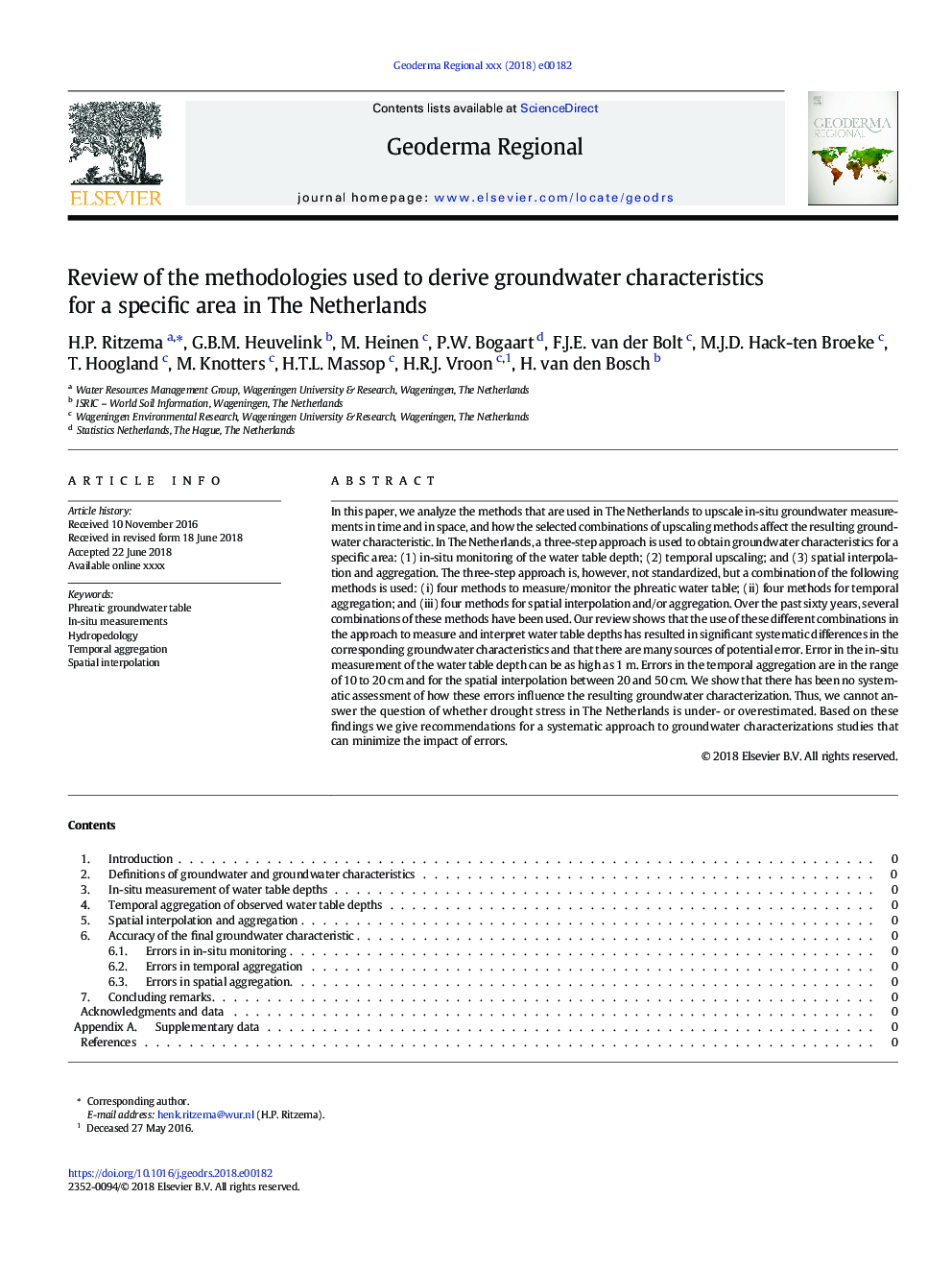| Article ID | Journal | Published Year | Pages | File Type |
|---|---|---|---|---|
| 8873210 | Geoderma Regional | 2018 | 8 Pages |
Abstract
In this paper, we analyze the methods that are used in The Netherlands to upscale in-situ groundwater measurements in time and in space, and how the selected combinations of upscaling methods affect the resulting groundwater characteristic. In The Netherlands, a three-step approach is used to obtain groundwater characteristics for a specific area: (1) in-situ monitoring of the water table depth; (2) temporal upscaling; and (3) spatial interpolation and aggregation. The three-step approach is, however, not standardized, but a combination of the following methods is used: (i) four methods to measure/monitor the phreatic water table; (ii) four methods for temporal aggregation; and (iii) four methods for spatial interpolation and/or aggregation. Over the past sixty years, several combinations of these methods have been used. Our review shows that the use of these different combinations in the approach to measure and interpret water table depths has resulted in significant systematic differences in the corresponding groundwater characteristics and that there are many sources of potential error. Error in the in-situ measurement of the water table depth can be as high as 1â¯m. Errors in the temporal aggregation are in the range of 10 to 20â¯cm and for the spatial interpolation between 20 and 50â¯cm. We show that there has been no systematic assessment of how these errors influence the resulting groundwater characterization. Thus, we cannot answer the question of whether drought stress in The Netherlands is under- or overestimated. Based on these findings we give recommendations for a systematic approach to groundwater characterizations studies that can minimize the impact of errors.
Related Topics
Physical Sciences and Engineering
Earth and Planetary Sciences
Earth-Surface Processes
Authors
H.P. Ritzema, G.B.M. Heuvelink, M. Heinen, P.W. Bogaart, F.J.E. van der Bolt, M.J.D. Hack-ten Broeke, T. Hoogland, M. Knotters, H.T.L. Massop, H.R.J. Vroon, H. van den Bosch,
